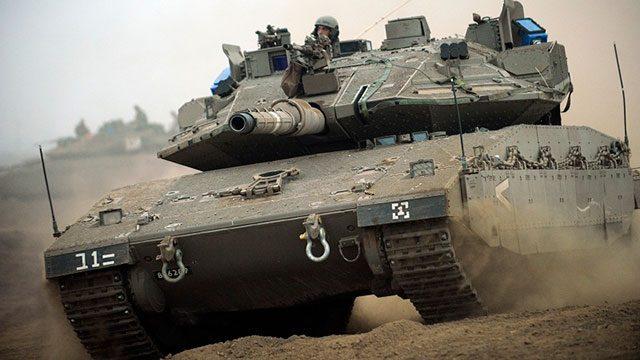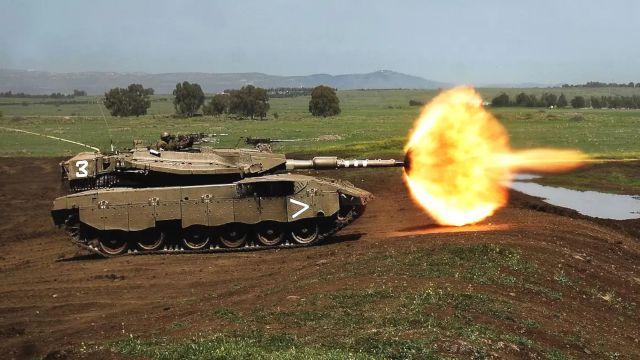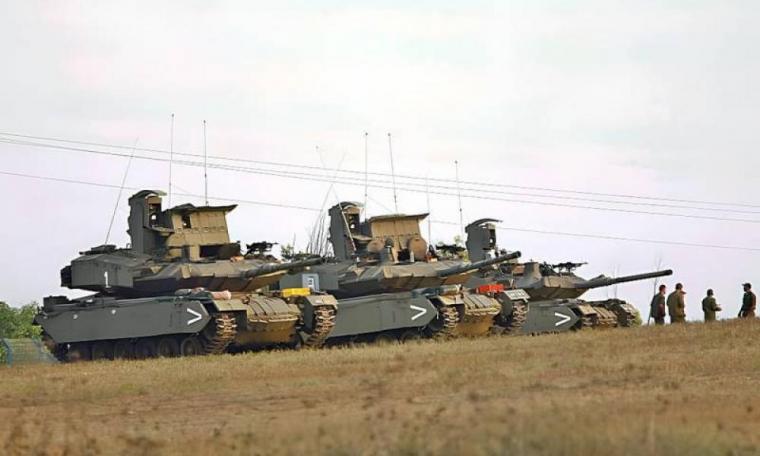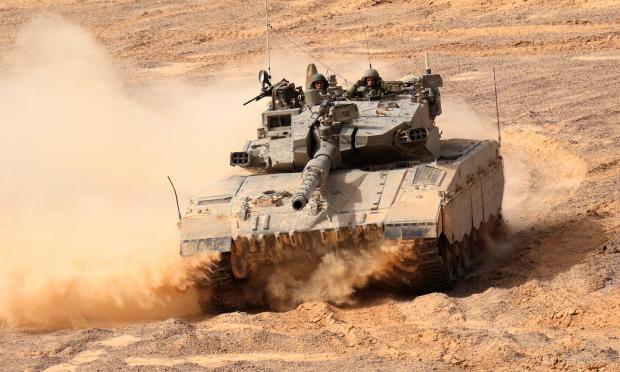According to Israeli media, Washington is showing strong interest in the entire range of tanks from the IDF's stockpiles. From the warehouses of the Israeli army, it is planned to withdraw and send to Europe not only the second and third generation Merkava, but also the obsolete Magah medium tanks.
In the Pentapostagma we mentioned that, Israel fears that the weapons supplied to Kiev by Western countries will fall into the hands of the Iranians.
In a new development without official confirmation from Cyprus, the Israeli Merkava will replace the 41 T-80U / UK tanks donated by Cyprus to Ukraine.
According to Dana Levi, a Twitter account claims that a deal is already in place to supply the Merkava tanks. They will go to Cyprus and Morocco.
According to Dana Levi, Israel's condition to Cyprus and Morocco is that their tanks will not be donated, re-exported or sold to Ukraine. Since the tanks are Israeli, the change of ownership after their donation to Morocco and Cyprus cannot be done without Israel's permission. This ensures that the tanks will not go to the front in Ukraine.
"The agreement on the export of Israeli Merkava-2/3 tanks was announced: part of the deliveries will be made to Cyprus to replace the 41 T-80U / UK tanks transferred to the Armed Forces of Ukraine and part to Morocco in compensation for procurement of the T-72B. None will be transferred to Ukraine. This is one of Israel's demands," Dana Levi tweeted.
About the Merkava
The Merkava, meaning "chariot" in Hebrew, was created after the Six Day War in 1967 and demonstrated the need for a better main battle tank. The development of this unique Israeli tank began in the early 1970s, with the experience gained from the 1973 Yom Kippur War playing a key role.

The Merkava stands out from other main battle tanks due to its unique design. Its front-mounted engine and rear turret enhance its defenses. The Merkava is versatile, with a rear compartment that can hold up to 10 soldiers in addition to its crew of four. It can also be converted into an armored ambulance if needed.
The Mk 1 variant, a 60-ton vehicle introduced in 1979, can reach a top speed of 29 mph (46 km/h) on roads, featuring a 105 mm main gun and three 7.62x51 mm machine guns.
Mk 2 version
By 1983, the Israel Defense Forces (IDF) began receiving the upgraded Mk 2 variants. This new model featured upgrades such as improved armor and drivetrain components. The highlight? A 60mm mortar was cleverly carried inside the turret, allowing the crew to fire from inside the hull. Truly a major advance in tank technology!

The Mk 2 Merkava tank has evolved to include advanced thermal optics and more armor, enhancing its night warfare and endurance. The Mk 2D version introduced a composite armor package with modular sections for easy replacement after damage.
In 1989, the Mk 3 variant brought a 120mm main gun, a more powerful engine, an improved powertrain and upgraded fire control. This model is five tons heavier, but faster, reaching speeds of up to 37 miles per hour (60 kilometers per hour).
Mk 3 and Mk 4 versions
Continued development resulted in several Mk 3 sub-variants. These featured sensor upgrades and other improvements, reflecting the continued pursuit of perfection in armored warfare. The new Mk 4 boasts a powerful 120mm gun and a revamped hull housing a more powerful engine. It also features advanced sensors, superior battle management and data sharing capabilities.

Since 2009, the IDF has equipped Mk 4 variants with the Trophy Active Protection System (APS), which protects tanks from anti-tank guided missiles and other anti-armor infantry weapons. In addition, the Merkava led to field-ready derivatives such as the Namer, a turretless heavy armored personnel carrier, and the Ofek command vehicle.



